

Shabbat Shalom Abraham Return From The Akeida By Rav Kook Zt L. From RavKook.n3.net: The 'Akeida', the cover of Isaac', was dull.
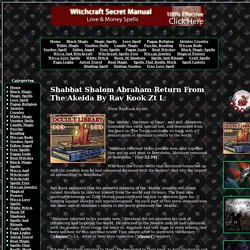
Abraham conceded this extra special test, and descended from the fence in. The Torah concludes its book with a demarcation of Abraham's return to the world: "Abraham returned to his juvenile men, and together they got up and went to Beersheba. Abraham remained in Beersheba. " Why does the Torah recite that Abraham connected up with the juvenile men he had consumed deceased with the donkey? Rav Kook explained that the powerful learning of the 'Akeida' possibly will stand caused Abraham to interval himself from the world and its ways. "Abraham returned to his juvenile men. " But now Abraham returned to them. "Jointly they rose up and went to Beersheba. " So is Beersheba? Practical attitude, appropriately ration to complete the physical world. "Abraham remained in Beersheba".
Meditation Extrsensory Perception How To Develop Your Psychic Abilities To See A Fairy Spell. Error 403. Unavailable in your country. Unavailable in your country. Table of Contents: Witchcraft and Magic in the Nordic Middle Ages. 2010 | 384 pages | Cloth $49.95 | Paper $24.95 Religion | Anthropology View main book page Table of Contents PrefaceIntroductionChapter 1.
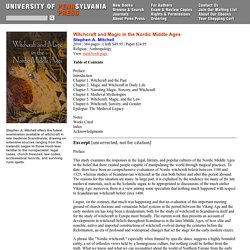
Witchcraft and the PastChapter 2. Magic and Witchcraft in Daily LifeChapter 3. Narrating Magic, Sorcery, and WitchcraftChapter 4. NotesWorks CitedIndexAcknowledgments Excerpt [uncorrected, not for citation] Preface. Nordic Witchcraft in Transition: Impotence, Heresy and Diabolism in 14th-century Bergen. Witches cooking in a cauldron Nordic Witchcraft in Transition: Impotence, Heresy and Diabolism in 14th-century Bergen Stephen A.
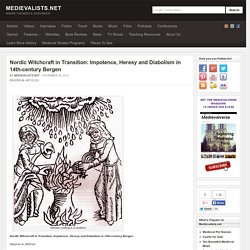
Mitchell Scandia: Vol.63:1 (1997) Abstract Within the orbit of witchcraft, what is the relationship between sexuality, heresy, and diabolism? Our understanding of the European witchcraft phenomenon in all its manifold details – its accusations, crazes, and so on – has undergone remarkable reevaluation in recent decades, and certainly the study of Nordic witchcraft has been profoundly influenced and energized by it. Click here to read this article from Scandia. Nordic Witchcraft in Transition: Impotence, Hersery and Diabolism in 14th-century Bergen. Catholic Encyclopedia (1913)/Witchcraft - Wikisource, the free online library. It is not easy to draw a clear distinction between magic and witchcraft.
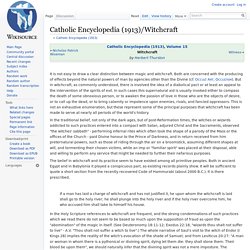
Both are concerned with the producing of effects beyond the natural powers of man by agencies other than the Divine (cf. Occult Art, Occultism). But in witchcraft, as commonly understood, there is involved the idea of a diabolical pact or at least an appeal to the intervention of the spirits of evil. In such cases this supernatural aid is usually invoked either to compass the death of some obnoxious person, or to awaken the passion of love in those who are the objects of desire, or to call up the dead, or to bring calamity or impotence upon enemies, rivals, and fancied oppressors. This is not an exhaustive enumeration, but these represent some of the principal purposes that witchcraft has been made to serve at nearly all periods of the world's history.
Aleister Crowley's Thelema Abbey. In 1919 , Aleister Crowley - a mystic and occultist known as "The Great Beast - had a revelation: he and his followers had to create a sanctuary, a holy place that would enable them to live through the Law of Thelema on a daily basis.

This ideal temple, the Thelema Abbey as he would call it, had to be settled in Cefalù, a small fishing town of the Sicilian coast. Crowley is a major figure of modern occultism, and was already well known at the turn of the century. Famous for introducing sex and drugs as sacramental rituals into a complex syncretic system he called Magick, Crowley believed in finding ones "True Will. " "True Will", famously summed up in Crowley's quote "Do what thou wilt shall be the whole of the Law. Your True WIll was you without the hang ups of society nor desire for specified results. For a small amount of money, Crowley rented the Villa Santa Barbara, a one story house facing the Mediterranean sea.
As of 2010 the Abbey was up for sale for 1.5 Million Euro. Queen of Elphame. Queen of Elphame[1] or "Elf-hame" (-hame stem only occurs in conjectural reconstructed orthography[2][3]), in the folklore belief of Lowland Scotland and Northern England, designates the elfin queen of the otherworld mentioned in Scottish witch trials.
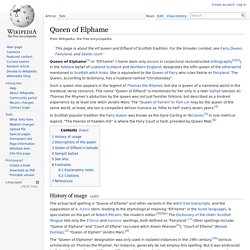
She is equivalent to the Queen of Fairy who rules Faërie or Fairyland. The Queen, according to testimony, has a husband named "Christsonday". Such a queen also appears in the legend of Thomas the Rhymer, but she is queen of a nameless world in the medieval verse romance. The name "Queen of Elfland" is mentioned for her only in a later ballad (version A). Thomas the Rhymer's abduction by the queen was not just familiar folklore, but described as a kindred experience by at least one witch (Andro Man). An Error Occurred Setting Your User Cookie.
Witches of Cornwall. Macabre evidence of age-old spells surfaces in an archaeologist's front yard Archaeologist Jacqui Wood holds a fragment of a cauldron unearthed from a buried spring-fed pool near her home.
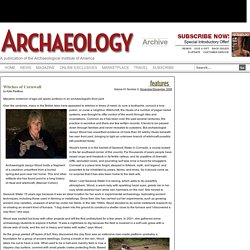
This and other artifacts she has found point to a long history of ritual and witchcraft. (Manuel Cohen)